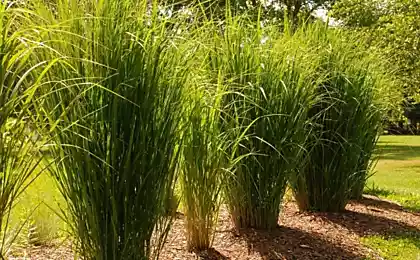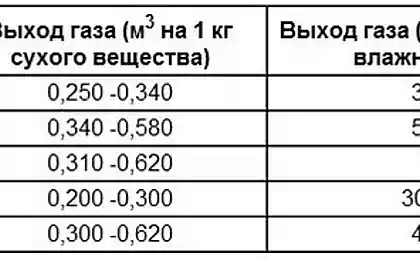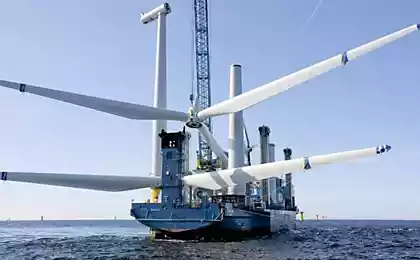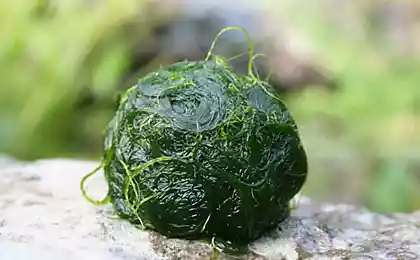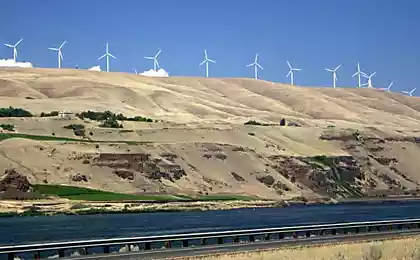679
Algae as food and as fuel
Algae are among the fastest-growing living organisms, which could not fail to arouse interest in their use as food and energy purposes — as a biofuel. The active study and cultivation of algae are starting from 1960-ies in the world and in Russia. The article talks about the reality and prospects of food and energy use of algae, economic and environmental aspects of the production of algal biofuels.
Algae in the system of living organisms
Starting a conversation about algae and their values for power, not to mention that all energy on Earth, with the exception of tidal and geothermal, is the direct or transformed by the energy of sunlight.
The Sun heated land surface causes movement of air that creates wind energy. In turn, the wind on the ocean surface generates wave energy. Heating by the Sun the water surface leads to evaporation of water and creates a water cycle in nature, without which there would be energy of moving water.

Finally, without the Sun life is impossible, biomass and bioenergy. Moreover, oil, gas, coal, peat, all of this is biomass, transformed to various degrees, and is also derived from solar energy.
As for algae, this group of living organisms creates, without exaggeration, the Foundation of life on Earth, directly using solar energy for growth.
Algae (lat. Algae) in everyday understanding are the plants associated with aquatic habitats, which, however, is not always the case. Algae are a very heterogeneous population. Not all algae live only in water, as well as not all aquatic plants belong to algae.
Living organisms are classified in various ways. The current classification includes two major divisions (taxa) or two Empire living organisms:
1. Viruses precellular organisms.
2. Cellular organisms. Cellular organisms are divided into two major taxa of lower order (netcarta or domain):
1. Prokaryotes — organisms without the Express limited membrane of the cell nucleus.
2. Eukaryotes — organisms with cell nucleus.
Prokaryotes include the two kingdoms of organisms — the archaea or archaebacteria and bacteria or eubacteria. Eukaryotes — more extensive group of living organisms, including the well-known Kingdom of fungi, plants and animals.
Organisms that combine the concept of "algae", are almost at all levels of the taxonomic ladder cellular organisms — from bacteria to plants (table. 1) and include two main groups: prokaryotic algae — Kingdom in the domain of prokaryotes that includes the subkingdom (for a different classification — division) blue-green and prochlorophyte algae; these algae — podtsarstvo in the plant Kingdom, including a number of departments.

Interestingly, the taxonomic position of a prokaryotic blue-green algae remains a controversial issue. Microbiologists Roger Stanier and Cornelis van Niel, who formulated a theory of dividing living organisms into two global domain — prokaryotes and eukaryotes, proposed to consider the terms "prokaryote" and "bacteria" are equivalent. From this moment on blue-green algae are classified in two ways — like bacteria (cyanobacteria) and plants, being photosynthetic organisms. In addition, all cellular organisms can be divided into unicellular (protozoa, lower, protists) and multicellular (higher) and build the classification on this basis, highlighting the protozoa as a separate Kingdom. Among the algae there are unicellular and multicellular and colonial organisms forming a system of interconnected cells.

Sizes of algae vary widely — from 0.5–1 µm (10-6 m) of some cyanobacteria to tens of meters in some plant forms of algae. The algae live in marine and fresh waters and in the soil.
A common feature of green plants and algae, including prokaryotic, is the ability to photosynthesis or the conversion of electromagnetic energy of sunlight into energy of chemical bonds of organic substances is carried out in the light due to the presence of photosynthetic pigments — chlorophyll in plants, and bacteriorhodopsin bacteriochlorophyll in prokaryotes.
The reaction of photosynthesis — the transformation of carbon dioxide and water into glucose and oxygen looks like this:

For green plants and algae, photosynthesis is the source of power and growth. In turn, photosynthetic organisms we owe the appearance and preserve a breathable atmosphere.
Photosynthetic organisms belong to the category of autotrophic used to directly power an inorganic substance and convert them to organic. Other organisms, including animals and man — heterotrophic unable to synthesize organic matter from inorganic. For them, in turn, the autotrophs provide the necessary forage base and are a source of physical existence. Thus, algae are organisms, on the one hand, owed its existence directly to the Sun, on the other — is the basis of the rest of organic life on Earth.
In this connection it is necessary to consider the key quantitative indicators: volume and biomass growth of plants and algae. The biomass of the Earth as a whole is estimated at 1.3 trillion tons, of which the phytomass (plants) accounts for over 1.2 trillion tons, or more than 95 % of the earth's biomass (tab. 2).
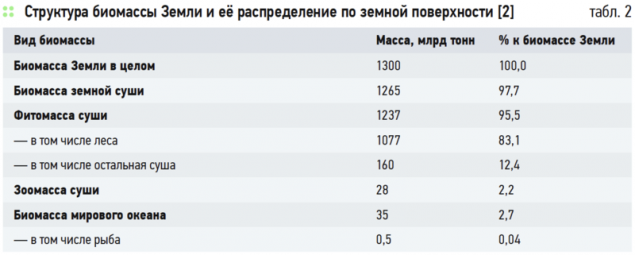
Note that if the categories of biomass to consider humans and the Earth's population, it with a population of about 7 billion people will be of the order of 300 million tons — about 1/3000 or 0.03% of the total terrestrial biomass and about 1 % of Tomassi.
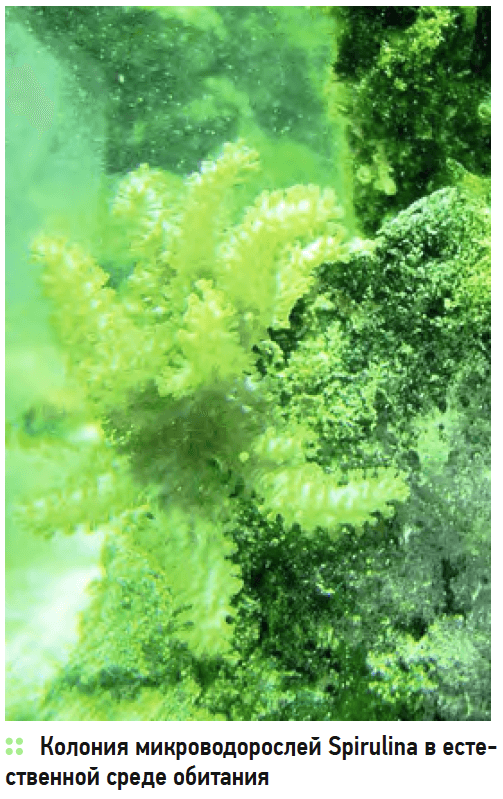
While the annual growth of biomass is 17 % of the total amount, or about 220 billion tons, including oceanic biomass — more than 87 billion tons.
Most high speed reproduction and, accordingly, increase of biomass characteristic for the smallest organisms, which include most of the algae. In particular, biomass of phytoplankton (floating algae) in the oceans is estimated (in wet weight) to 1.5 billion tons and its annual growth — 550 billion tons. In other words, the year mass of algae can grow in 350 times. According to some estimates, algae account for 2/3 of the total biomass of the Earth. The exact same calculations in this case is hardly possible.
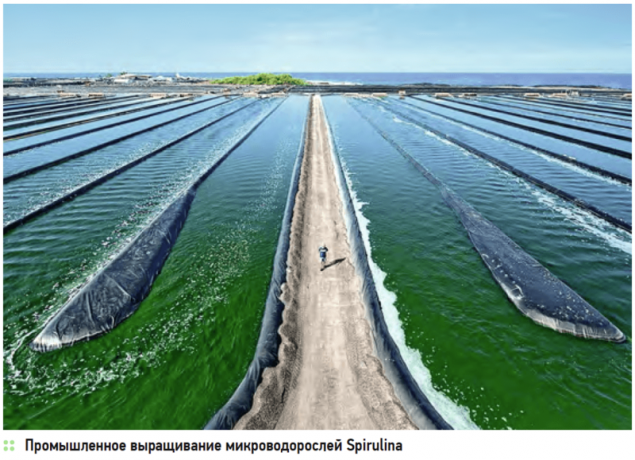
With the greatest speed multiply the smallest single-celled algae or microalgae — the time intervals between the divisions of the cells under favorable conditions may be reduced to 20 minutes and even less. In this case, just a day one cell could theoretically give about 5 × 1021 descendants. When the mass of a single cell of about 665 femtograms (of 6.65 × 10-16 kg or of 6.65 × 10-13 g), their total mass during the day will exceed 100 tons, and the value of all the present biomass of the Earth is reached 12 hours later. Even in real, not ideal conditions, high reproduction rate of the algae covering the water surface, are well known, and when growing in the pond microalga spirulina (Spirulina), as practice shows, it doubles its biomass every dapat days.
Algae as food and as fuel
With such a huge potential of reproduction is due almost exclusively solar energy and water without consuming organic substances! — microalgae until a few decades ago have become the object of close attention and research the possibility of use as a food and energy product.
The prospect of culturing algae with an annual fee of tens and hundreds of tons of biomass from 1 hectare of water surface at times and even orders of magnitude greater than the yield of any known crop, and without incurring significant costs could not look extremely tempting.
The original had food the use of seaweed has a long history. In particular, it is known that the Aztecs, Incas and peoples of Central and Eastern Africa living in areas of lake Chad and the great rift valley, eaten cakes made of dried spirulina.
In this regard, since 1960-ies in the world there is interest in algae (for the most part, spirulina), primarily as food for animals and for humans. There was also discovered a number of useful properties of algae related to strengthening of immunity, prevention and treatment of some diseases, increasing the productivity of livestock and crops.
In the second half of 1970-ies spirulina in powder or capsule appeared on the world food markets where it was presented as a new natural product energy natural food supplements with high contents of protein, that is "food of the future".
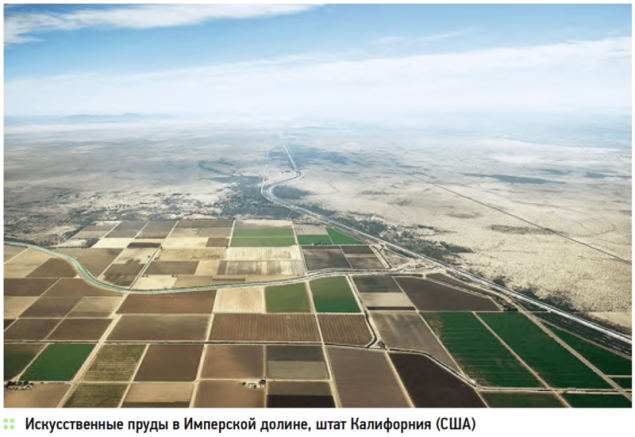
In the United States enterprise for growing of microalgae in artificial ponds operating in experimental mode, was created in 1977. The first ponds appeared in the wilderness, in the County of Imperial valley (Imperial Valley) in the South-East of the state of California. The conditions there are favorable due to the combination of warm and Sunny weather with the possibility of supplying water from the Colorado river.
In parallel, the algae took Japan, then in process of joined ventures in India, China, Thailand, Taiwan and Mexico.
During the 1980-ies and the first half of the 1990-ies the production of microalgae in the world increased to 1000 tonnes. By the end of 2000-ies of the world production of microalgae, including spirulina, Chlorella (chlorella), Dunaliella (dunaliella), haematococcus (haematoccocus) reached 10 thousand tons in dry weight.
Almost at the same time, in 1980-1990-ies in the USSR and Russia began the study and cultivation of spirulina for food purposes, for use as supplements in human food and in feed for livestock and poultry.
In these works, actively participated also employees of research laboratory of renewable energy sources (SILVIA) of geographical faculty of MSU named after M. V. Lomonosov. Was established the positive effect of using spirulina, in particular, as food additives for poultry. Currently in Russia there are some small-scale production of spirulina.
Regarding the possibility of directly energetic use of algae to produce biofuel, active research in this direction began in 1960-1970-ies. Leaders in these investigations were, in particular, the French petroleum Institute (Institut francais du petrole, IFP) and the national renewable energy laboratory (National Renewable Energy Laboratory, NREL) the U.S. Department of energy (Department of Energy, DoE).

NREL in 1978 launched a program to study the possibilities of producing fuel from algae Aquatic Species Program (literally — the Program of aquatic species or aquatic). It was phased out by 1996, when it was discovered that biofuels from algae would be too expensive in comparison with fossil hydrocarbons, but in 2010 it was announced the resumption of studies in connection with the instability of oil prices and the increasing requirements for energy security, environmental friendliness and the reduction of greenhouse gas emissions.
In the last few years, biofuels from algae get and use in experimental mode.
In parallel, research in this direction took place in the Soviet Union, including in NELVIA. In particular, between 1989 and 2002 the laboratory has conducted studies of biological productivity and the possibilities of using microalgae as a source of energy for the production of biogas and liquid biofuels, on the basis of the experimental area Marine hydrophysical Institute of Academy of Sciences of the Ukrainian SSR, on the southern shore of the Crimea near the village of Katsiveli. The staff of the laboratory was designed and constructed system "Biosolar" for cultivation of microalgae — photosynthetic units or biogenerator, with accommodation in the sea and on land, with a total area of several hundred square meters.
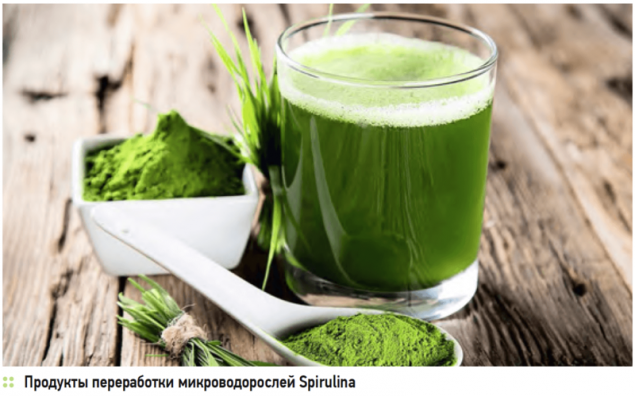
The object of the experiment was selected, platensis microalga spirulina (Spirulina platensis), also called arthospira (Arthospira platensis). One of the features of the experiment was the gradual adaptation of the species (in vivo spirulina lives in freshwater subtropical and tropical waters) to sea water of the Black sea. The experiments showed a rather high productivity annual output of biomass per unit of algal plantation area of 70 m2 reached one ton. Extrapolating is more than 140 tons per 1 ha, while the attainment of such a result on large areas in the Russian conditions is a separate task.
In addition, the feedstock for biofuels — the lipids (fats), which in different species varies. Spirulina has a high proportion of protein — about 60% of dry mass, among other things, makes it a valuable food product. At the same time, the lipid content is only 7 %. For comparison, the rapeseed and sunflower lipids accounts for 30-60 % of the mass, in the seeds of soybeans and corn — 15-25 % and above in the fruit of the oil palm — 45-70 %. These cultures are currently used as the main raw material for biofuel production. Therefore, we are working with microalgae with higher lipid content, while bearing in our country (including SILVIA), and in the world mainly experimental in nature.
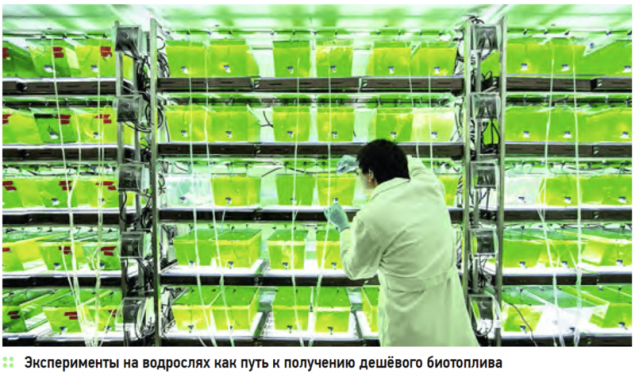
Algae as energy source – advantages and disadvantages
So microalgae is very high. The yield per hectare could theoretically monthly to reach tons and even tens of tons in dry weight, which at times even orders of magnitude higher than traditional crops. The content of lipids in some species, such as botryococcus brownie (Botryococcus braunii), Dunaliella (Dunaliella), nannochloris (Nannochloris), stichococcus (Stichococcus) under optimal conditions can reach 80 %. Thus, the theoretically possible yield of biofuels in the tens and even hundreds of times higher than that currently used oil crops (table. 3).
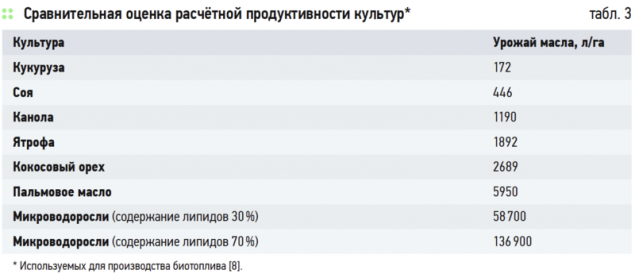
It is possible to avoid conflict with food-oriented agricultural land use. Plantations of microalgae can be located in natural and artificial reservoirs, uncomfortable and unused land and water areas, while occupying a substantially smaller area.
Finally, the cultivation of traditional crops on land associated with large emissions of greenhouse gases and other pollutants. Against this background, the cultivation of algae looks environmentally safe, moreover, increase the absorption of carbon dioxide and oxygen in the atmosphere, creating a double positive effect — getting food and fuel, not accompanied by pollution and the purification of the environment. The problem, as usual, is that the actual conditions usually are far from optimal and theoretically possible.
In the framework of the above-mentioned ASP programs in the United States microalgae with a high content of lipids was cultivated in open ponds in the state of new Mexico (South-West of the country). The average productivity was 20 g/m2 per day (equivalent to 73 tonnes per hectare per year), and in certain periods — up to 70 g/m2 per day.
However, it turned out that it is impossible for a long time to maintain a monoculture of microalgae in an open system, where inevitably there are other organisms. In addition, the high productivity of algae is possible with a sufficiently large fertilizing with nitrogen in the absence of it it crashes. In this case, shows similarities with the traditional crops also require nitrogen fertilizers. At the same time, in the absence of nitrogen the fat content in algae cells is higher. Thus, the problem of the simultaneous growth of productivity and lipid content, contributing to energy efficiency culture is intractable and requires finding the optimal ratio of the two.
Japanese researchers from the Research Institute of innovative technology for the Earth (Research Institute of Innovative Technology for the Earth (RITE)), who worked on the same task in 1991-1999, came to similar results.
In 1997-2001, a large research project in this direction was carried out in the Hawaiian Islands, with the microalga haematococcus Pluvialis (Haematococcus pluvialis), which in the first stage were grown in closed photobioreactors, the second — placed in terms of open reservoirs. The average productivity of the cultivated algae biomass amounted to 38 tons from 1 hectare, the maximum exceeded 90 tons, output of biofuels, respectively, had 11.4–27.5 tons from 1 hectare, which is several times higher than that of the most productive oil crops on the land.
At the same time, when growing in open conditions and productivity, and lipid content are significantly lower, and growing in a closed bioreactor leads to significantly higher costs.
Translated into energy equivalents, it turns out that to produce 1 l of biodiesel from microalgae requires the energy equivalent 0,56– 0,81 l of fuel (average of about 0.7 l), including electricity, nutrients and more. In this case, besides the economic dimension, there is also ecological, since the energy for the cultivation of algae is already mined from non-renewable sources and environmentally sound is not, that is the environmental effect of biodiesel production are largely depreciated. In addition, there is a negative environmental effect associated with nitrogen fertilizer and water use of plantations of algae, that is the same as in traditional agricultural production. In addition, talking about cost, excluding investment, wages, other costs, particularly transportation fuels.
Calculations of the costs of obtaining biodiesel from microalgae give significantly different results in a very high degree dependent on the method of production of algae, natural conditions and other factors. In particular, by calculations of participants of the program ASP, the cost of 1 liter of "algae" biodiesel made 26-86 cents ($ 39-127 per barrel), in the Hawaiian project is about 40 cents ($ 56 per barrel), and researchers from British Columbia (Canada) give much higher figures — from $ 2.5 to $ 7 per 1 L.
According to our calculations, the investment costs of 1 ha of algae farms in open conditions, including the installation of cultivators, equipment for preparing food, mixing, drying and filtration of the biomass and other, will be about $ 50 thousand.
Operating costs in a very high degree dependent on local conditions ranging from climate and ending with the level of remuneration. They can be estimated at $ 50-100 thousand, but in Russia they can be several times higher, particularly because of the significantly greater compared to the subtropics and tropics of the power consumption and the short growing season when grown in open conditions.
It is quite acceptable conditions for the cultivation of algae as food and drug additives, but as a fuel source, they are too expensive.
If these costs, even in the case of collection from 1 ha to 30 tons of biomass annually, each ton will cost $ 1600– 3200 ($ 1,6–3,2 per 1 kg), even without taking into account the initial investment and the cost of obtaining of fuels. It is close to the figures given by the canadian researchers.
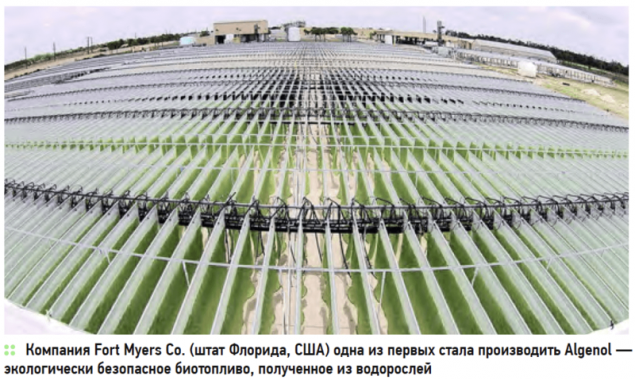
The prospects for algal energy
Interest in algae as source of biofuel natural for the prices of oil at $ 100 per barrel and above, as it was in the second half of 2000-ies. Currently, the situation is not so favorable, and it is hardly possible to predict whether it will change for the better for the renewable energy side for the foreseeable future.
Currently is and will continue finding ways to reduce the cost of bioenergy production from algae. In addition, it includes the search, selection and breeding cultures of algae with high lipid content, more productive and resilient.
As a food product (which can also be considered a source of energy), algae are already used and have clear prospects. Probably, as in the case of peat, in the future, it is reasonable to use cultivated algae with the creation of a whole range of food, medicinal and energy products at the output. For Russia, this could also be one of the directions of medium and long-term innovative growth and creating high-tech economy on the domestic intellectual and production basis. published
Source: www.c-o-k.ru/articles/vodorosli-i-energetika
Algae in the system of living organisms
Starting a conversation about algae and their values for power, not to mention that all energy on Earth, with the exception of tidal and geothermal, is the direct or transformed by the energy of sunlight.
The Sun heated land surface causes movement of air that creates wind energy. In turn, the wind on the ocean surface generates wave energy. Heating by the Sun the water surface leads to evaporation of water and creates a water cycle in nature, without which there would be energy of moving water.

Finally, without the Sun life is impossible, biomass and bioenergy. Moreover, oil, gas, coal, peat, all of this is biomass, transformed to various degrees, and is also derived from solar energy.
As for algae, this group of living organisms creates, without exaggeration, the Foundation of life on Earth, directly using solar energy for growth.
Algae (lat. Algae) in everyday understanding are the plants associated with aquatic habitats, which, however, is not always the case. Algae are a very heterogeneous population. Not all algae live only in water, as well as not all aquatic plants belong to algae.
Living organisms are classified in various ways. The current classification includes two major divisions (taxa) or two Empire living organisms:
1. Viruses precellular organisms.
2. Cellular organisms. Cellular organisms are divided into two major taxa of lower order (netcarta or domain):
1. Prokaryotes — organisms without the Express limited membrane of the cell nucleus.
2. Eukaryotes — organisms with cell nucleus.
Prokaryotes include the two kingdoms of organisms — the archaea or archaebacteria and bacteria or eubacteria. Eukaryotes — more extensive group of living organisms, including the well-known Kingdom of fungi, plants and animals.
Organisms that combine the concept of "algae", are almost at all levels of the taxonomic ladder cellular organisms — from bacteria to plants (table. 1) and include two main groups: prokaryotic algae — Kingdom in the domain of prokaryotes that includes the subkingdom (for a different classification — division) blue-green and prochlorophyte algae; these algae — podtsarstvo in the plant Kingdom, including a number of departments.

Interestingly, the taxonomic position of a prokaryotic blue-green algae remains a controversial issue. Microbiologists Roger Stanier and Cornelis van Niel, who formulated a theory of dividing living organisms into two global domain — prokaryotes and eukaryotes, proposed to consider the terms "prokaryote" and "bacteria" are equivalent. From this moment on blue-green algae are classified in two ways — like bacteria (cyanobacteria) and plants, being photosynthetic organisms. In addition, all cellular organisms can be divided into unicellular (protozoa, lower, protists) and multicellular (higher) and build the classification on this basis, highlighting the protozoa as a separate Kingdom. Among the algae there are unicellular and multicellular and colonial organisms forming a system of interconnected cells.

Sizes of algae vary widely — from 0.5–1 µm (10-6 m) of some cyanobacteria to tens of meters in some plant forms of algae. The algae live in marine and fresh waters and in the soil.
A common feature of green plants and algae, including prokaryotic, is the ability to photosynthesis or the conversion of electromagnetic energy of sunlight into energy of chemical bonds of organic substances is carried out in the light due to the presence of photosynthetic pigments — chlorophyll in plants, and bacteriorhodopsin bacteriochlorophyll in prokaryotes.
The reaction of photosynthesis — the transformation of carbon dioxide and water into glucose and oxygen looks like this:

For green plants and algae, photosynthesis is the source of power and growth. In turn, photosynthetic organisms we owe the appearance and preserve a breathable atmosphere.
Photosynthetic organisms belong to the category of autotrophic used to directly power an inorganic substance and convert them to organic. Other organisms, including animals and man — heterotrophic unable to synthesize organic matter from inorganic. For them, in turn, the autotrophs provide the necessary forage base and are a source of physical existence. Thus, algae are organisms, on the one hand, owed its existence directly to the Sun, on the other — is the basis of the rest of organic life on Earth.
In this connection it is necessary to consider the key quantitative indicators: volume and biomass growth of plants and algae. The biomass of the Earth as a whole is estimated at 1.3 trillion tons, of which the phytomass (plants) accounts for over 1.2 trillion tons, or more than 95 % of the earth's biomass (tab. 2).

Note that if the categories of biomass to consider humans and the Earth's population, it with a population of about 7 billion people will be of the order of 300 million tons — about 1/3000 or 0.03% of the total terrestrial biomass and about 1 % of Tomassi.

While the annual growth of biomass is 17 % of the total amount, or about 220 billion tons, including oceanic biomass — more than 87 billion tons.
Most high speed reproduction and, accordingly, increase of biomass characteristic for the smallest organisms, which include most of the algae. In particular, biomass of phytoplankton (floating algae) in the oceans is estimated (in wet weight) to 1.5 billion tons and its annual growth — 550 billion tons. In other words, the year mass of algae can grow in 350 times. According to some estimates, algae account for 2/3 of the total biomass of the Earth. The exact same calculations in this case is hardly possible.

With the greatest speed multiply the smallest single-celled algae or microalgae — the time intervals between the divisions of the cells under favorable conditions may be reduced to 20 minutes and even less. In this case, just a day one cell could theoretically give about 5 × 1021 descendants. When the mass of a single cell of about 665 femtograms (of 6.65 × 10-16 kg or of 6.65 × 10-13 g), their total mass during the day will exceed 100 tons, and the value of all the present biomass of the Earth is reached 12 hours later. Even in real, not ideal conditions, high reproduction rate of the algae covering the water surface, are well known, and when growing in the pond microalga spirulina (Spirulina), as practice shows, it doubles its biomass every dapat days.
Algae as food and as fuel
With such a huge potential of reproduction is due almost exclusively solar energy and water without consuming organic substances! — microalgae until a few decades ago have become the object of close attention and research the possibility of use as a food and energy product.
The prospect of culturing algae with an annual fee of tens and hundreds of tons of biomass from 1 hectare of water surface at times and even orders of magnitude greater than the yield of any known crop, and without incurring significant costs could not look extremely tempting.
The original had food the use of seaweed has a long history. In particular, it is known that the Aztecs, Incas and peoples of Central and Eastern Africa living in areas of lake Chad and the great rift valley, eaten cakes made of dried spirulina.
In this regard, since 1960-ies in the world there is interest in algae (for the most part, spirulina), primarily as food for animals and for humans. There was also discovered a number of useful properties of algae related to strengthening of immunity, prevention and treatment of some diseases, increasing the productivity of livestock and crops.
In the second half of 1970-ies spirulina in powder or capsule appeared on the world food markets where it was presented as a new natural product energy natural food supplements with high contents of protein, that is "food of the future".

In the United States enterprise for growing of microalgae in artificial ponds operating in experimental mode, was created in 1977. The first ponds appeared in the wilderness, in the County of Imperial valley (Imperial Valley) in the South-East of the state of California. The conditions there are favorable due to the combination of warm and Sunny weather with the possibility of supplying water from the Colorado river.
In parallel, the algae took Japan, then in process of joined ventures in India, China, Thailand, Taiwan and Mexico.
During the 1980-ies and the first half of the 1990-ies the production of microalgae in the world increased to 1000 tonnes. By the end of 2000-ies of the world production of microalgae, including spirulina, Chlorella (chlorella), Dunaliella (dunaliella), haematococcus (haematoccocus) reached 10 thousand tons in dry weight.
Almost at the same time, in 1980-1990-ies in the USSR and Russia began the study and cultivation of spirulina for food purposes, for use as supplements in human food and in feed for livestock and poultry.
In these works, actively participated also employees of research laboratory of renewable energy sources (SILVIA) of geographical faculty of MSU named after M. V. Lomonosov. Was established the positive effect of using spirulina, in particular, as food additives for poultry. Currently in Russia there are some small-scale production of spirulina.
Regarding the possibility of directly energetic use of algae to produce biofuel, active research in this direction began in 1960-1970-ies. Leaders in these investigations were, in particular, the French petroleum Institute (Institut francais du petrole, IFP) and the national renewable energy laboratory (National Renewable Energy Laboratory, NREL) the U.S. Department of energy (Department of Energy, DoE).

NREL in 1978 launched a program to study the possibilities of producing fuel from algae Aquatic Species Program (literally — the Program of aquatic species or aquatic). It was phased out by 1996, when it was discovered that biofuels from algae would be too expensive in comparison with fossil hydrocarbons, but in 2010 it was announced the resumption of studies in connection with the instability of oil prices and the increasing requirements for energy security, environmental friendliness and the reduction of greenhouse gas emissions.
In the last few years, biofuels from algae get and use in experimental mode.
In parallel, research in this direction took place in the Soviet Union, including in NELVIA. In particular, between 1989 and 2002 the laboratory has conducted studies of biological productivity and the possibilities of using microalgae as a source of energy for the production of biogas and liquid biofuels, on the basis of the experimental area Marine hydrophysical Institute of Academy of Sciences of the Ukrainian SSR, on the southern shore of the Crimea near the village of Katsiveli. The staff of the laboratory was designed and constructed system "Biosolar" for cultivation of microalgae — photosynthetic units or biogenerator, with accommodation in the sea and on land, with a total area of several hundred square meters.

The object of the experiment was selected, platensis microalga spirulina (Spirulina platensis), also called arthospira (Arthospira platensis). One of the features of the experiment was the gradual adaptation of the species (in vivo spirulina lives in freshwater subtropical and tropical waters) to sea water of the Black sea. The experiments showed a rather high productivity annual output of biomass per unit of algal plantation area of 70 m2 reached one ton. Extrapolating is more than 140 tons per 1 ha, while the attainment of such a result on large areas in the Russian conditions is a separate task.
In addition, the feedstock for biofuels — the lipids (fats), which in different species varies. Spirulina has a high proportion of protein — about 60% of dry mass, among other things, makes it a valuable food product. At the same time, the lipid content is only 7 %. For comparison, the rapeseed and sunflower lipids accounts for 30-60 % of the mass, in the seeds of soybeans and corn — 15-25 % and above in the fruit of the oil palm — 45-70 %. These cultures are currently used as the main raw material for biofuel production. Therefore, we are working with microalgae with higher lipid content, while bearing in our country (including SILVIA), and in the world mainly experimental in nature.

Algae as energy source – advantages and disadvantages
So microalgae is very high. The yield per hectare could theoretically monthly to reach tons and even tens of tons in dry weight, which at times even orders of magnitude higher than traditional crops. The content of lipids in some species, such as botryococcus brownie (Botryococcus braunii), Dunaliella (Dunaliella), nannochloris (Nannochloris), stichococcus (Stichococcus) under optimal conditions can reach 80 %. Thus, the theoretically possible yield of biofuels in the tens and even hundreds of times higher than that currently used oil crops (table. 3).

It is possible to avoid conflict with food-oriented agricultural land use. Plantations of microalgae can be located in natural and artificial reservoirs, uncomfortable and unused land and water areas, while occupying a substantially smaller area.
Finally, the cultivation of traditional crops on land associated with large emissions of greenhouse gases and other pollutants. Against this background, the cultivation of algae looks environmentally safe, moreover, increase the absorption of carbon dioxide and oxygen in the atmosphere, creating a double positive effect — getting food and fuel, not accompanied by pollution and the purification of the environment. The problem, as usual, is that the actual conditions usually are far from optimal and theoretically possible.
In the framework of the above-mentioned ASP programs in the United States microalgae with a high content of lipids was cultivated in open ponds in the state of new Mexico (South-West of the country). The average productivity was 20 g/m2 per day (equivalent to 73 tonnes per hectare per year), and in certain periods — up to 70 g/m2 per day.
However, it turned out that it is impossible for a long time to maintain a monoculture of microalgae in an open system, where inevitably there are other organisms. In addition, the high productivity of algae is possible with a sufficiently large fertilizing with nitrogen in the absence of it it crashes. In this case, shows similarities with the traditional crops also require nitrogen fertilizers. At the same time, in the absence of nitrogen the fat content in algae cells is higher. Thus, the problem of the simultaneous growth of productivity and lipid content, contributing to energy efficiency culture is intractable and requires finding the optimal ratio of the two.
Japanese researchers from the Research Institute of innovative technology for the Earth (Research Institute of Innovative Technology for the Earth (RITE)), who worked on the same task in 1991-1999, came to similar results.
In 1997-2001, a large research project in this direction was carried out in the Hawaiian Islands, with the microalga haematococcus Pluvialis (Haematococcus pluvialis), which in the first stage were grown in closed photobioreactors, the second — placed in terms of open reservoirs. The average productivity of the cultivated algae biomass amounted to 38 tons from 1 hectare, the maximum exceeded 90 tons, output of biofuels, respectively, had 11.4–27.5 tons from 1 hectare, which is several times higher than that of the most productive oil crops on the land.
At the same time, when growing in open conditions and productivity, and lipid content are significantly lower, and growing in a closed bioreactor leads to significantly higher costs.
Translated into energy equivalents, it turns out that to produce 1 l of biodiesel from microalgae requires the energy equivalent 0,56– 0,81 l of fuel (average of about 0.7 l), including electricity, nutrients and more. In this case, besides the economic dimension, there is also ecological, since the energy for the cultivation of algae is already mined from non-renewable sources and environmentally sound is not, that is the environmental effect of biodiesel production are largely depreciated. In addition, there is a negative environmental effect associated with nitrogen fertilizer and water use of plantations of algae, that is the same as in traditional agricultural production. In addition, talking about cost, excluding investment, wages, other costs, particularly transportation fuels.
Calculations of the costs of obtaining biodiesel from microalgae give significantly different results in a very high degree dependent on the method of production of algae, natural conditions and other factors. In particular, by calculations of participants of the program ASP, the cost of 1 liter of "algae" biodiesel made 26-86 cents ($ 39-127 per barrel), in the Hawaiian project is about 40 cents ($ 56 per barrel), and researchers from British Columbia (Canada) give much higher figures — from $ 2.5 to $ 7 per 1 L.
According to our calculations, the investment costs of 1 ha of algae farms in open conditions, including the installation of cultivators, equipment for preparing food, mixing, drying and filtration of the biomass and other, will be about $ 50 thousand.
Operating costs in a very high degree dependent on local conditions ranging from climate and ending with the level of remuneration. They can be estimated at $ 50-100 thousand, but in Russia they can be several times higher, particularly because of the significantly greater compared to the subtropics and tropics of the power consumption and the short growing season when grown in open conditions.
It is quite acceptable conditions for the cultivation of algae as food and drug additives, but as a fuel source, they are too expensive.
If these costs, even in the case of collection from 1 ha to 30 tons of biomass annually, each ton will cost $ 1600– 3200 ($ 1,6–3,2 per 1 kg), even without taking into account the initial investment and the cost of obtaining of fuels. It is close to the figures given by the canadian researchers.

The prospects for algal energy
Interest in algae as source of biofuel natural for the prices of oil at $ 100 per barrel and above, as it was in the second half of 2000-ies. Currently, the situation is not so favorable, and it is hardly possible to predict whether it will change for the better for the renewable energy side for the foreseeable future.
Currently is and will continue finding ways to reduce the cost of bioenergy production from algae. In addition, it includes the search, selection and breeding cultures of algae with high lipid content, more productive and resilient.
As a food product (which can also be considered a source of energy), algae are already used and have clear prospects. Probably, as in the case of peat, in the future, it is reasonable to use cultivated algae with the creation of a whole range of food, medicinal and energy products at the output. For Russia, this could also be one of the directions of medium and long-term innovative growth and creating high-tech economy on the domestic intellectual and production basis. published
Source: www.c-o-k.ru/articles/vodorosli-i-energetika
Mercedes-AMG decided on the name of the 1000-horsepower hypercar
Choose a romantic and practical gifts for girls on February 14



